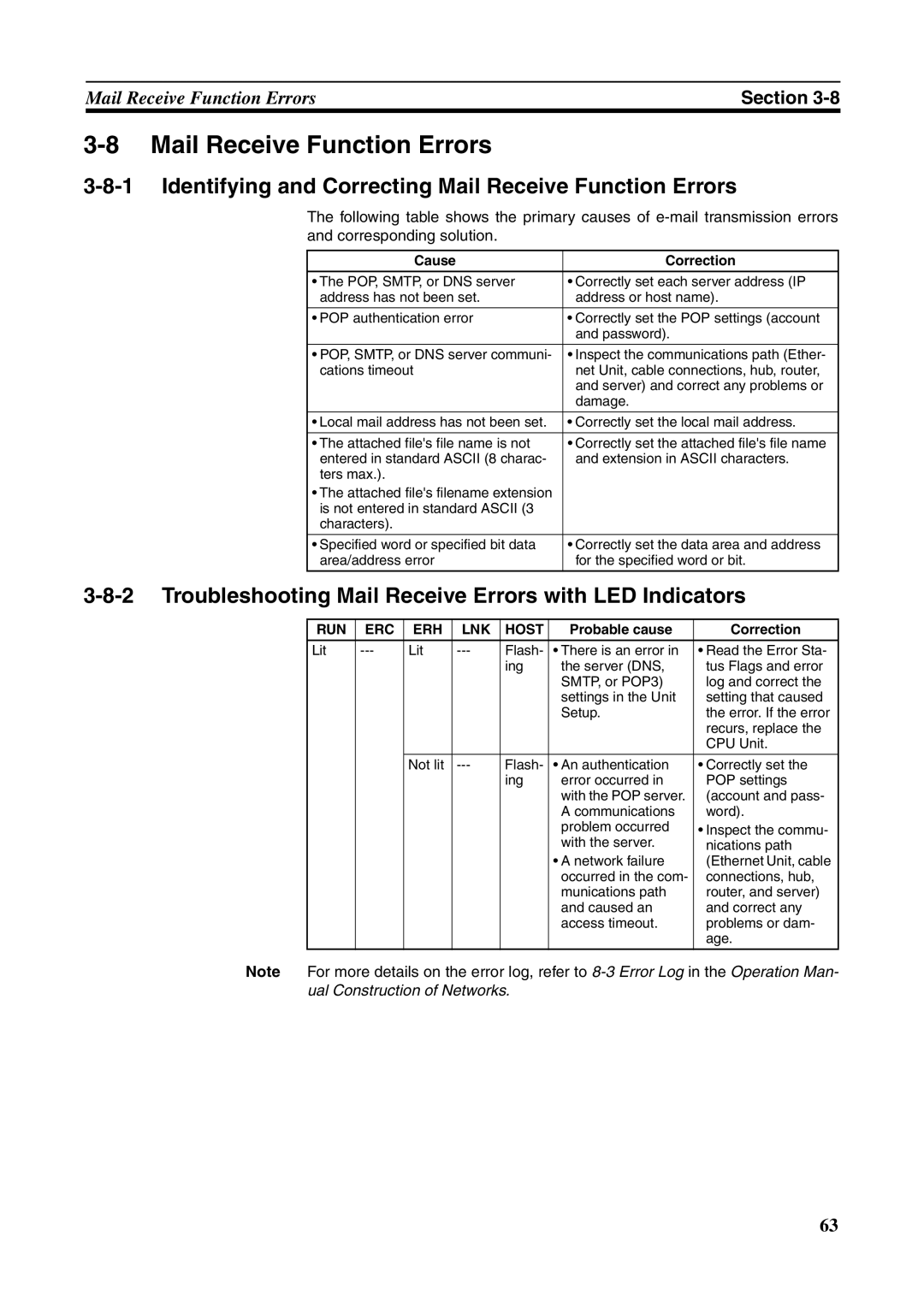Mail Receive Function Errors | Section |
3-8 Mail Receive Function Errors
3-8-1 Identifying and Correcting Mail Receive Function Errors
The following table shows the primary causes of
Cause | Correction |
|
|
• The POP, SMTP, or DNS server | • Correctly set each server address (IP |
address has not been set. | address or host name). |
|
|
• POP authentication error | • Correctly set the POP settings (account |
| and password). |
|
|
• POP, SMTP, or DNS server communi- | • Inspect the communications path (Ether- |
cations timeout | net Unit, cable connections, hub, router, |
| and server) and correct any problems or |
| damage. |
|
|
• Local mail address has not been set. | • Correctly set the local mail address. |
|
|
• The attached file's file name is not | • Correctly set the attached file's file name |
entered in standard ASCII (8 charac- | and extension in ASCII characters. |
ters max.). |
|
• The attached file's filename extension |
|
is not entered in standard ASCII (3 |
|
characters). |
|
|
|
• Specified word or specified bit data | • Correctly set the data area and address |
area/address error | for the specified word or bit. |
|
|
3-8-2 Troubleshooting Mail Receive Errors with LED Indicators
RUN | ERC | ERH | LNK | HOST | Probable cause | Correction |
|
|
|
|
|
|
|
Lit | Lit | Flash- | • There is an error in | • Read the Error Sta- | ||
|
|
|
| ing | the server (DNS, | tus Flags and error |
|
|
|
|
| SMTP, or POP3) | log and correct the |
|
|
|
|
| settings in the Unit | setting that caused |
|
|
|
|
| Setup. | the error. If the error |
|
|
|
|
|
| recurs, replace the |
|
|
|
|
|
| CPU Unit. |
|
|
|
|
|
|
|
|
| Not lit | Flash- | • An authentication | • Correctly set the | |
|
|
|
| ing | error occurred in | POP settings |
|
|
|
|
| with the POP server. | (account and pass- |
|
|
|
|
| A communications | word). |
|
|
|
|
| problem occurred | • Inspect the commu- |
|
|
|
|
| with the server. | nications path |
|
|
|
|
| • A network failure | (Ethernet Unit, cable |
|
|
|
|
| occurred in the com- | connections, hub, |
|
|
|
|
| munications path | router, and server) |
|
|
|
|
| and caused an | and correct any |
|
|
|
|
| access timeout. | problems or dam- |
|
|
|
|
|
| age. |
|
|
|
|
|
|
|
Note For more details on the error log, refer to
63
